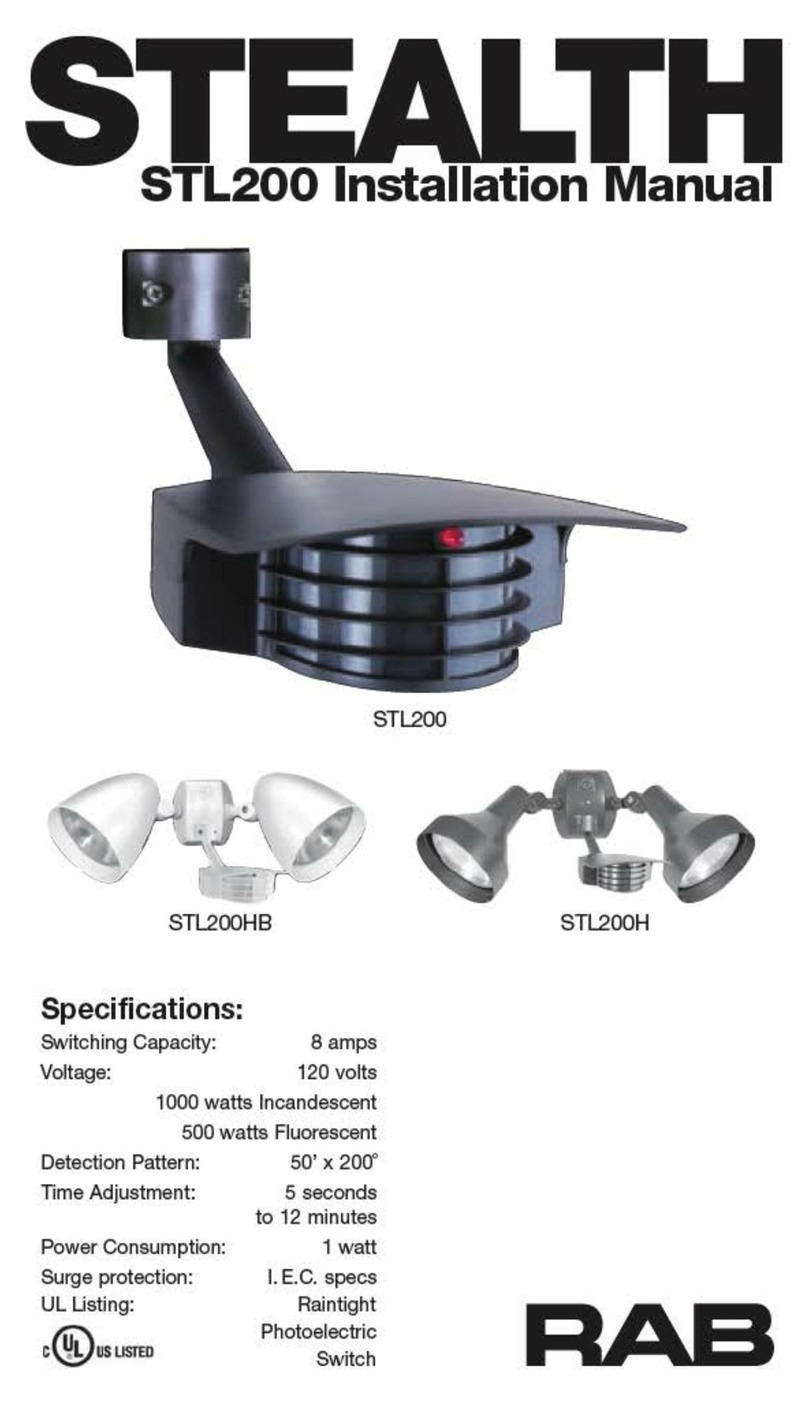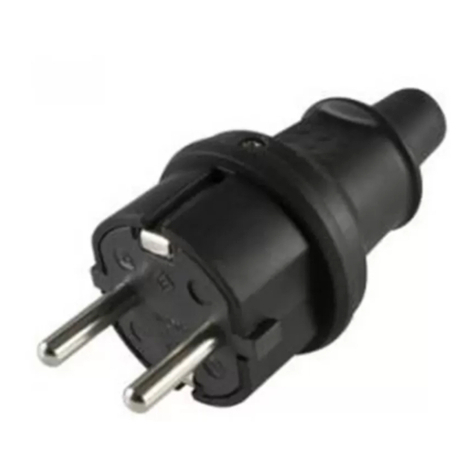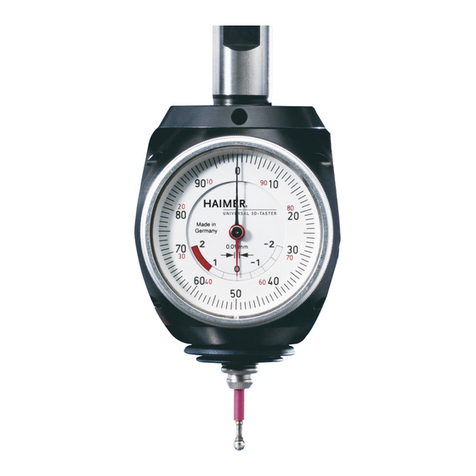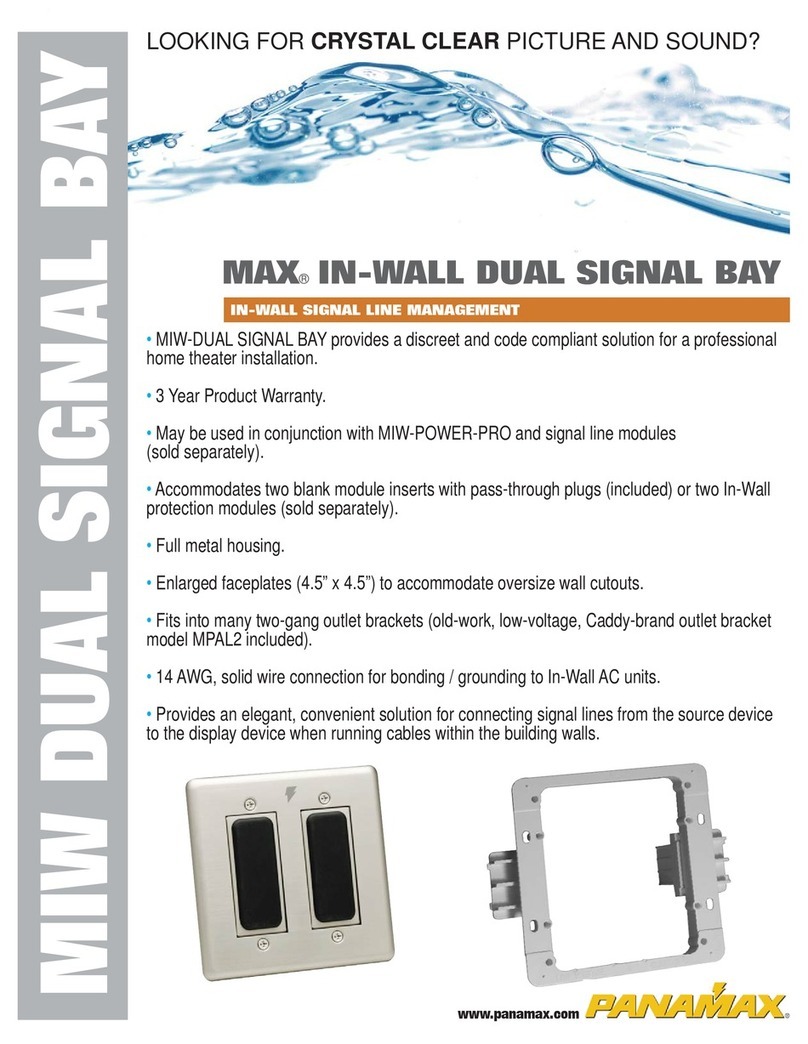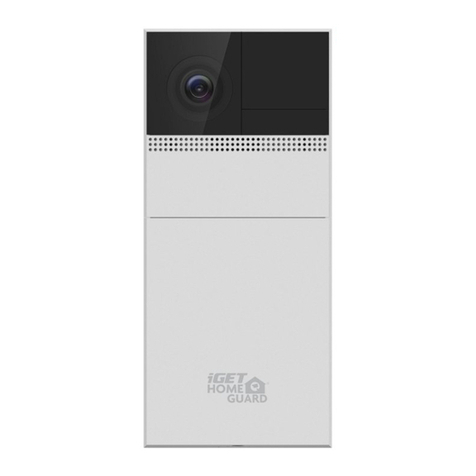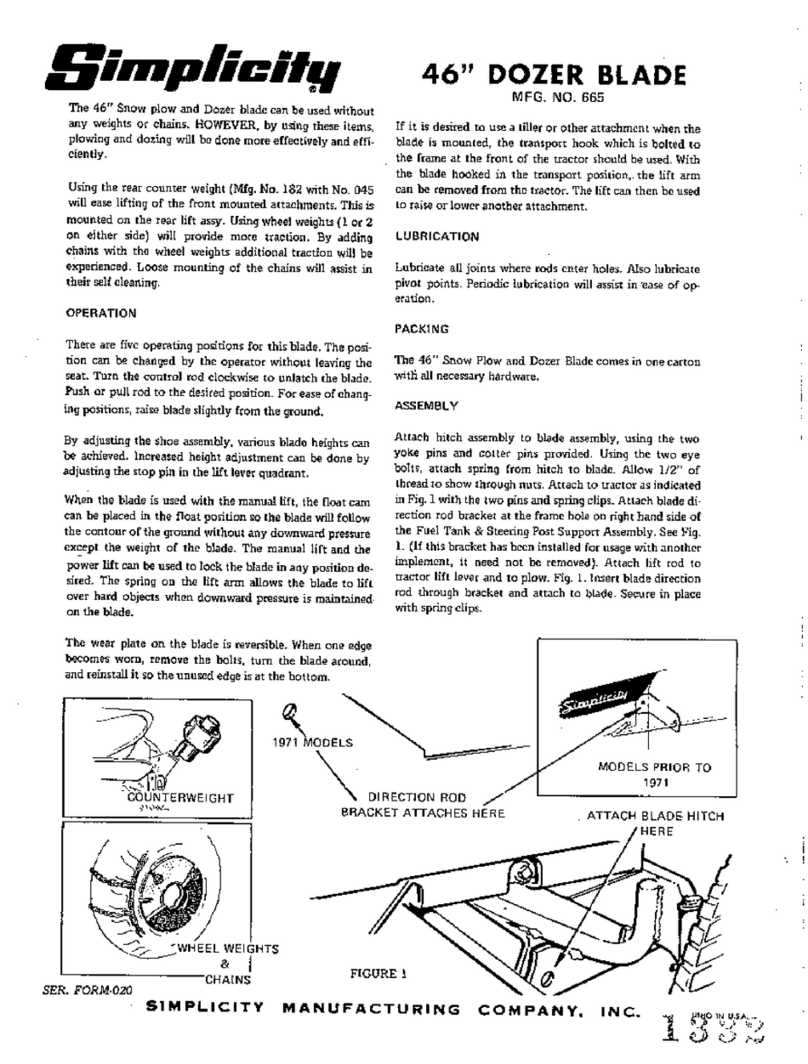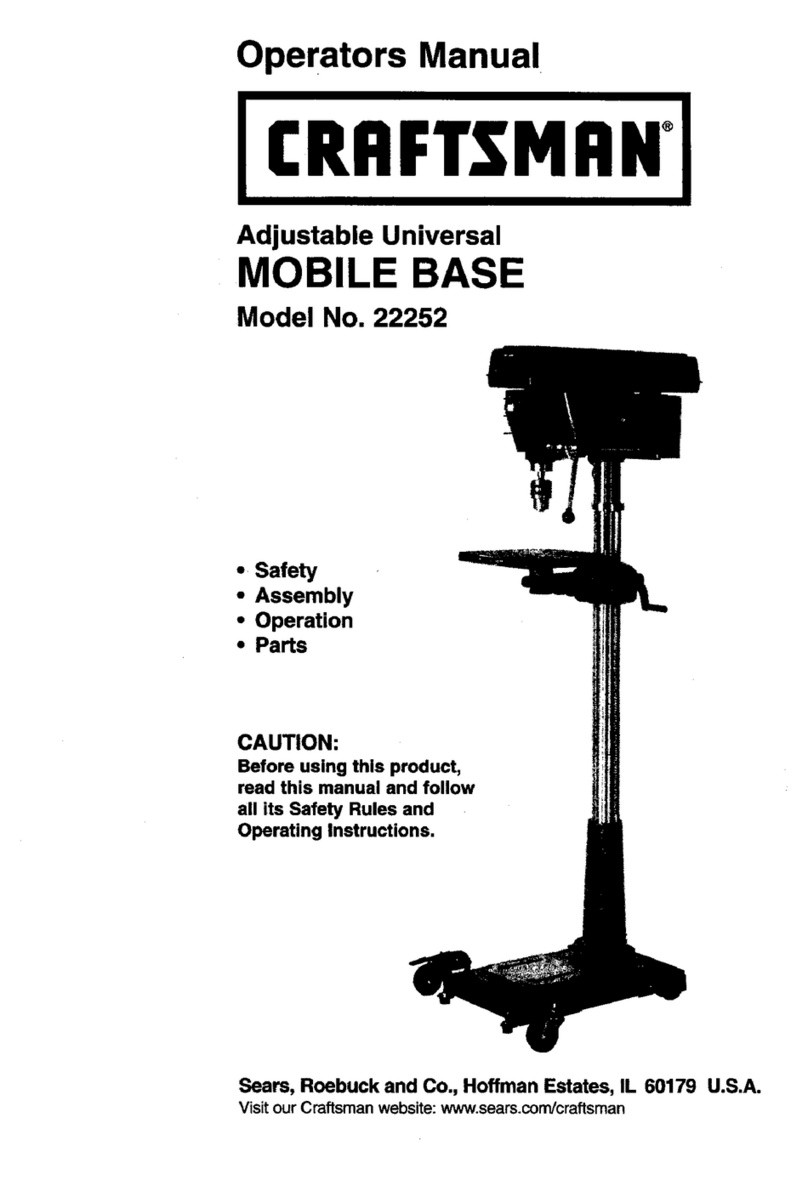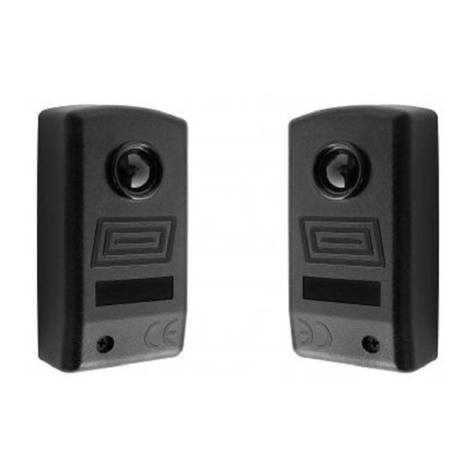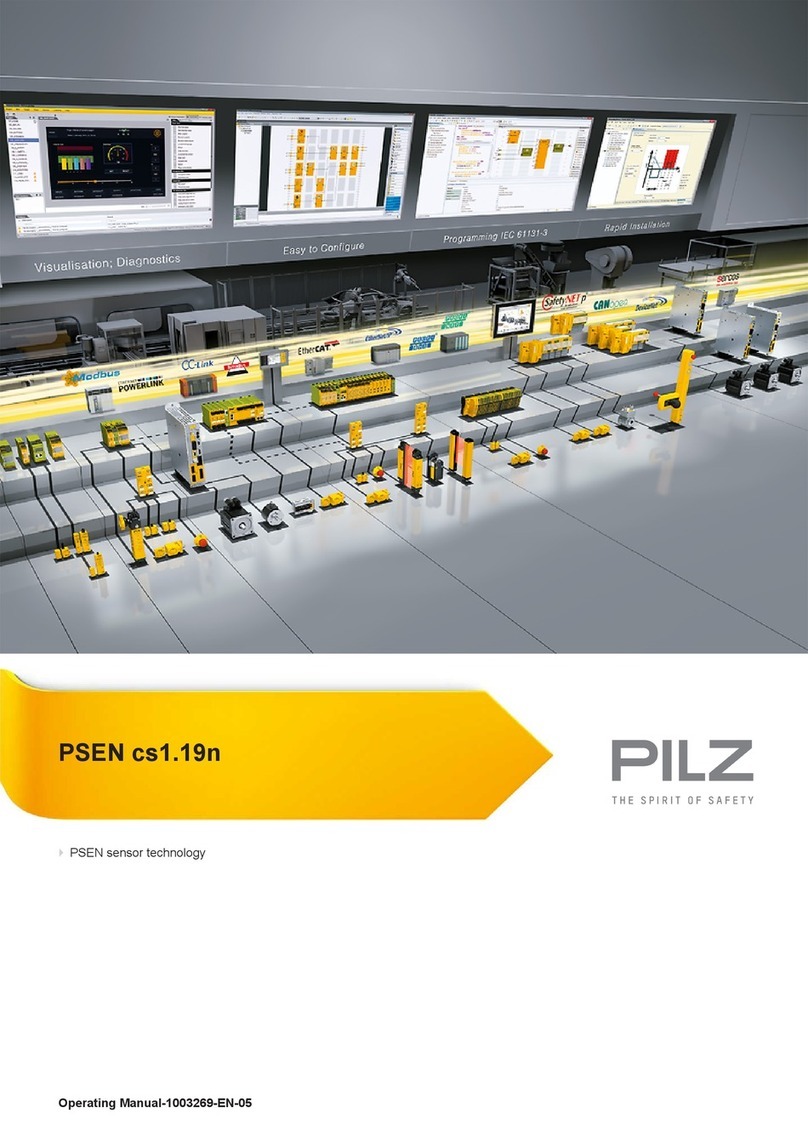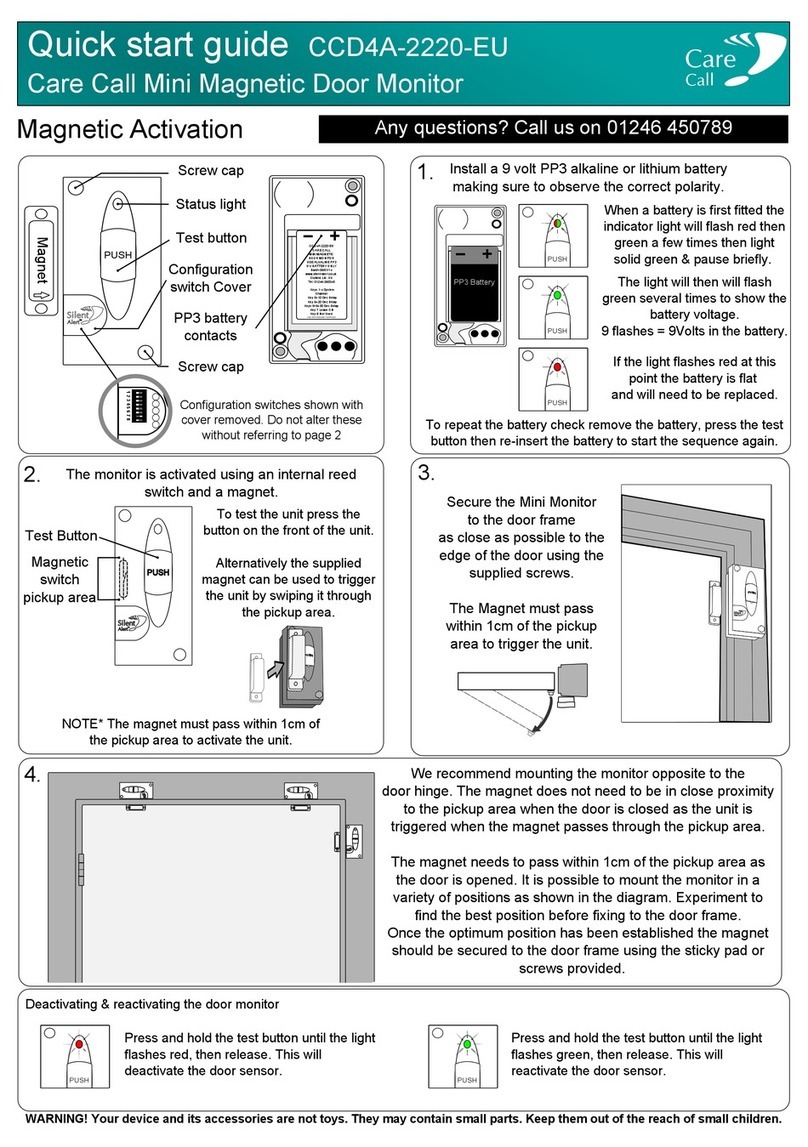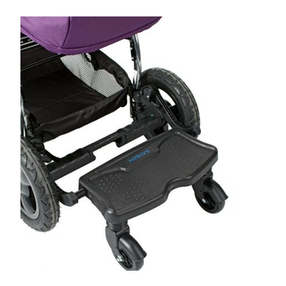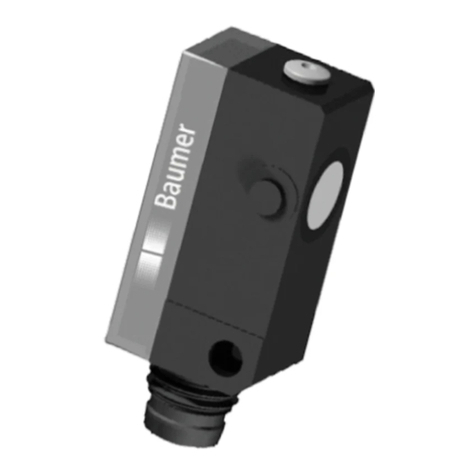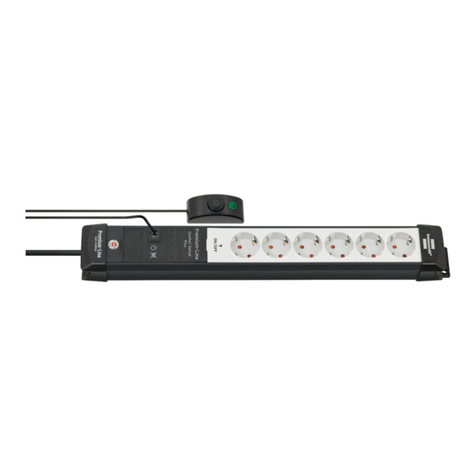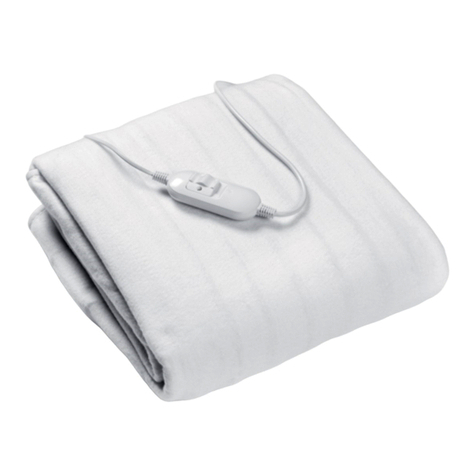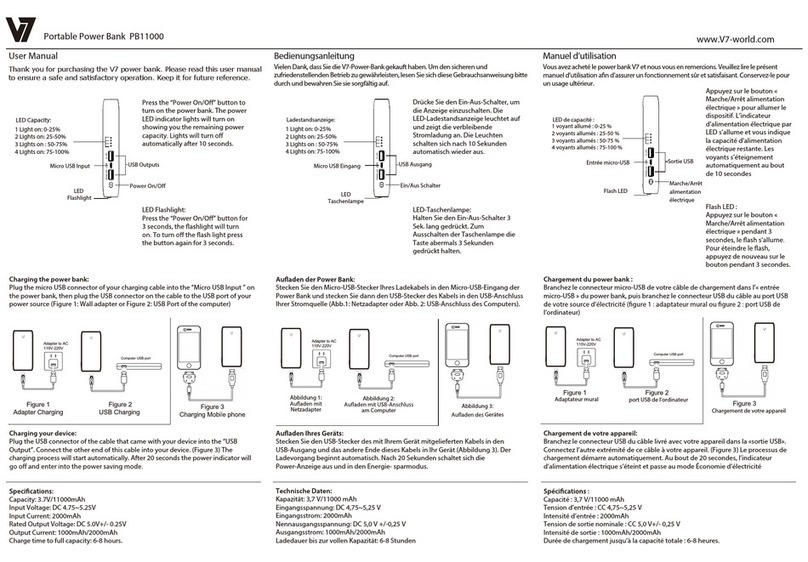technotrans termotek P70100-24495 User guide

Instruction Manual
ORIGINAL INSTRUCTION MANUAL
Cooler
P70100-24495
90000899992-00 - EN
2019-07-02

2
Copyright clause
We reserve the right to implement technical changes which may result
in deviations from the illustrations and information contained in this
manual.
The translation, disclosure to third parties as well as any reproduction
and distribution are prohibited without our prior consent.
The main components, devices, arrangements, software as well as the
control and instrumentation equipment on all of our products are
protected both at home and abroad by patent applications, patents,
utility models or copyrights.
Copyright by
termotek GmbH
Im Rollfeld 6
D-76532 Baden-Baden
Federal Republic of Germany
termotek GmbH
www.gds.eu

3
1 Contact Addresses.................................................................................................................................5
1.1 Manufacturer's address ..................................................................................................................... 5
1.2 Service addresses ............................................................................................................................. 5
1.3 Making contact................................................................................................................................... 7
2 About this manual ..................................................................................................................................8
2.1 Use and storage ................................................................................................................................ 8
2.2 Target audience................................................................................................................................. 9
2.3 Explanation of the various notes ..................................................................................................... 10
2.4 Seal of quality .................................................................................................................................. 11
3 Liability and warranty ..........................................................................................................................12
3.1 General information ......................................................................................................................... 12
3.2 Terms of warranty............................................................................................................................ 13
3.3 Information on IT Safety .................................................................................................................. 14
4 Safety.....................................................................................................................................................15
4.1 General information ......................................................................................................................... 15
4.2 Intended use .................................................................................................................................... 16
4.3 Safety of personnel.......................................................................................................................... 16
4.4 Transport and installation/start-up ................................................................................................... 18
4.5 Operation ......................................................................................................................................... 19
4.6 Maintenance .................................................................................................................................... 19
4.7 Operating faults ............................................................................................................................... 19
4.8 Residual risks .................................................................................................................................. 20
4.9 Use of chemicals ............................................................................................................................. 20
4.10 Use of cleaning agents .................................................................................................................... 21
4.11 Safety labels .................................................................................................................................... 22
5 Description / Overview.........................................................................................................................23
5.1 General information ......................................................................................................................... 23
5.2 Safety devices ................................................................................................................................. 24
5.3 Factory protective measures ........................................................................................................... 24
5.4 Deactivation ..................................................................................................................................... 24
5.5 Foreseeable misuse ........................................................................................................................ 25
6 System Layout ......................................................................................................................................26
6.1 Overview.......................................................................................................................................... 26
6.2 Information concerning the refrigerant............................................................................................. 28
6.3 Refrigeration unit ............................................................................................................................. 29
6.3.1 General information ..................................................................................................................... 29
6.3.2 Obligation to maintain records..................................................................................................... 30
7 Transport...............................................................................................................................................31
7.1 Notes................................................................................................................................................ 31
7.2 Transport and packaging material ................................................................................................... 31
7.3 Transport to the installation location................................................................................................ 32
7.4 Installation site ................................................................................................................................. 33

4
8 Setting Up..............................................................................................................................................34
8.1 Notes................................................................................................................................................ 34
8.2 Installation........................................................................................................................................ 35
8.3 Medium connections........................................................................................................................ 36
8.4 Electrical connection........................................................................................................................ 38
8.5 Filling................................................................................................................................................ 39
8.6 Final steps after start-up.................................................................................................................. 41
9 Operation...............................................................................................................................................42
9.1 Notes................................................................................................................................................ 42
9.2 Switching the unit on or off .............................................................................................................. 43
9.3 Adjustments ..................................................................................................................................... 43
9.4 Refilling ............................................................................................................................................ 43
10 Maintenance..........................................................................................................................................44
10.1 Notes................................................................................................................................................ 44
10.2 Maintenance plan ............................................................................................................................ 46
10.3 Draining off the medium / Refilling the cooler with medium ............................................................ 48
10.4 Filter replacement ............................................................................................................................ 49
10.5 Refrigeration unit ............................................................................................................................. 50
10.5.1 General information ................................................................................................................. 50
10.5.2 Refrigerant sight glass ............................................................................................................. 51
10.6 Restart ............................................................................................................................................. 51
11 Troubleshooting ...................................................................................................................................52
11.1 Notes................................................................................................................................................ 52
11.2 General malfunctions....................................................................................................................... 53
11.3 Electrical connection........................................................................................................................ 54
11.4 Refrigeration unit ............................................................................................................................. 54
11.4.1 Refrigerant sight glass ............................................................................................................. 55
11.5 Unit-specific ..................................................................................................................................... 56
11.6 Restart ............................................................................................................................................. 56
12 Disconnecting the device ....................................................................................................................57
12.1 Notes................................................................................................................................................ 57
12.2 Dismantling ...................................................................................................................................... 58
12.3 Transport and storage ..................................................................................................................... 59
12.4 Recycling ......................................................................................................................................... 60
13 Technical data and further information .............................................................................................61
14 Index ......................................................................................................................................................62

Contact Addresses
5
1 Contact Addresses
1.1 Manufacturer's address
termotek GmbH
Im Rollfeld 6
D-76532 Baden-Baden
Phone +49 (0) 72 21 9711-0
Fax +49 (0) 72 21 9711-111
Germany
1.2 Service addresses
Europe
termotek GmbH
Im Rollfeld 6
D-76532 Baden-Baden
Phone +49 (0) 72 21 9711-0
Fax +49 (0) 72 21 9711-111
Email: service@termotek.de
Germany
technotrans SE
Robert-Linnemann-Straße 17
48336 Sassenberg
Phone: +49 (0) 25 83-301-2000
Fax: +49 (0) 25 83-301-2547
Email: custom[email protected]
Germany
technotrans graphics ltd.
Axis One, Brunel Way
Severalls Business Park
Colchester, Essex CO4 9QX
Phone: +44 (0) 1206-2242-00
Fax: +44 (0) 1206-2242-01
Email: service-uk@technotrans.co.uk
England
technotrans france sarl
ZAET “Les Haies“
Rue Albert Einstein
60740 Saint-Maximin cedex
Phone: +33 (0) 3 44-24 2128
Fax: +33 (0) 3 44-24 85 26
Email: service-france@technotrans.fr
France
technotrans France SARL
Surcusal en ESPAÑA
Paseo de Recoletos, 7 y 9, 5a
28004 Madrid
Phone: +34-91 679 2119
Email: service-spa[email protected]
Spain
technotrans italia s.r.l.
Via Spallanzani, 18
20025 Legnano (Mi)
Phone: +39 (0) 3 31-45 56 09
Fax: +39 (0) 3 31-45 50 65
Email: service-ital[email protected]t
Italy
America
technotrans america inc.
1441 E. Business Center Drive
Mt. Prospect, Illinois 60056
Phone: +1 (847) 227-9200
Fax: +1 (847) 227-9400
Email: service-usa@technotrans.com
USA
technotrans américa latina
Alameda Mercúrio, no. 318
American Park Empresarial
13347-662 Indaiatuba - SP
Phone: +55 (19) 3936-7900
Fax: +55 (19) 3935-1304
Email: servico@technotrans.com.br
Brasil

Contact Addresses
6
Asia
technotrans Asia-Pacific limited, Japan branch
322 Sannomiya Venture Building
4-1-23 Hamabe-Dori, Chuo-Ku
Kobe 651-0083
Phone: +81 3 5484 3180
Fax: +81 3 5484 3181
Email: service-japan@technotrans.com
Kobe, Japan
technotrans technologies pte.ltd
66 Kallang Pudding Road #04-03
Hor Kew Business Centre
Singapore 329324
Phone: +65 6508 6800
Fax: +65 6844 1566
Email: service-singapore@technotrans.com
Singapore
technotrans india pvt ltd.
#24, Eden Plaza Second Floor
Mount Poonamallee High Road
Nandambakkam, Chennai 600 089
Tamil Nadu
Phone: +91 (0) 44 4351 9349
Email: service-india@technotrans.com
Chennai, India
technotrans group (taicang) co., ltd
No. 8 North Loujiang Road
Taicang 215400
P.R.China
Phone +86 (0) 512 5367 8100
Fax +86 (0) 512 5367 8199
China
Australia
technotrans technologies pte ltd
Unit 7 / 111 Lewis Road
Wantirna
Victoria 3152
Phone: +61 3 9887 5049
Fax: +61 3 9801 1945
Email: service-austra[email protected]
Australia

Contact Addresses
7
1.3 Making contact
Please keep the following details ready (see the type plate of the unit) when
contacting us (e.g. for spare part orders, warranty claims, etc.):
• Product name
• Serial no.
NOTE
If necessary, enter the information, which is stated on the type plate of the unit,
into the table.
Name of the unit:
(Product Name) ……………………………………
Serial number:
(Serial No.) ……………………………………
Part number:
(Part No.) ……………………………………
Year of manufacture:
(Year of Manufacture) ……………………………………

About this manual
8
2 About this manual
2.1 Use and storage
NOTE
Prior to performing any work on the unit/system, read the instruction manual.
The following points must be noted:
• The instruction manual is an integral part of the unit/system and must be
available to the operating personnel at the unit/system at all times.
• The instruction manual is indispensable for the safe start-up, operation and
maintenance of the unit/system in line with its intended purpose.
• The instruction manual applies solely to the product that is stated on the
cover sheet.
• We reserve the right to change the instruction manual due to further
technical developments.
• This instruction manual is part of the scope of supply.
• The instruction manual shall apply from the transport phase up to the final
disposal and must be absolutely observed.
• Keep the instruction manual in a place where it is readily accessible at all
times. It must be complete, remain with the machine and must be available
to all authorised persons.
• Maintain the instruction manual in a clearly legible state at all times.
• Hand over the instruction manual along with the device if it is resold.
• The unit/system may present unavoidable residual risks to persons and
property. This is why the instruction manual must be read, understood and
strictly complied with for all types of tasks by the personnel prior to
commencing any work. In addition, any person who works on or with the
unit/system in any way must be instructed and familiar with the potential
hazards.
• This instruction manual is solely intended for trained and authorised
personnel.
• It is the operator's responsibility to ensure that the manual is read and
understood by all operating personnel before starting work.
• The illustrations in this manual are for providing a basic understanding and
may differ from the actual unit/system.

About this manual
9
2.2 Target audience
When working with the unit/system, the various tasks must be assigned to specific
groups of persons.
Depending on the location of use, the necessary qualification of the personnel may
be subject to varying statutory provisions. The operator must ensure compliance
with the relevant laws. Unless regulated by law, the following list is used to define
the permissible personnel and their minimum qualification.
The following points must be noted:
• Any work on the unit/system must be performed by qualified and instructed
personnel.
• The personnel must have knowledge of the relevant standards, provisions,
accident prevention regulations and operating conditions.
• The personnel must be instructed and trained for the tasks that need to be
performed.
• The personnel must be able to identify and avoid any potential hazards.
Person Task Qualification Lifcycle phase
Qualified
personnel for
transporting loads
Lifting/lowering and transport
of the system
Proven experience in the
handling of suspended loads
and in the securing of loads
Transport, installation,
disassembly and
removal
Qualified
personnel
(mechanics)
Mechanical work during: start-
up, elimination of faults and
malfunctions, maintenance
and shut-down
Training as an industrial
mechanic or an equivalent
professional qualification
Start-up, maintenance,
elimination of faults
and malfunctions,
shut-down,
disassembly and
removal
Qualified
personnel (trained
electricians)
Electrical work Specialised electrical training
or an equivalent professional
qualification
Qualified
personnel
(refrigeration
specialists)
Work on the refrigeration unit Training as a refrigeration
specialist or an equivalent
professional qualification
Qualified
personnel
(machine
operators and
fitters)
Operation and set-up of the
system
Person who has been trained
and instructed by the operator
based on the instructions for
use
Start-up, operation,
maintenance,
elimination of faults
and malfunctions
Qualified
personnel
(disposal
specialists)
Proper disposal of the system Knowledge about the disposal
regulations applicable on site
Shut-down,
disassembly and
removal, disposal
Qualified
personnel (safety
specialists)
Implementation of the
applicable safety regulations
Knowledge about the safety
regulations applicable on site
All phases
Others (e.g.
visitors)
Site inspection Person under the supervision
of a safety specialist
-

About this manual
10
2.3 Explanation of the various notes
The warning notes are preceded by signal words indicating the severity of the
hazard.
Compliance with the warning notes is imperative in order to avoid accidents,
injuries and damage to property.
Explanation of warning notices used in this manual:
DANGER
Short description of danger
The signal word DANGER identifies an immediately threatening danger.
Any non-adherence will result in severe injuries or death.
WARNING
Short description of danger
The signal word WARNING identifies a potential danger.
Any non-adherence may result in severe injuries or death.
CAUTION
Short description of danger
The signal word CAUTION identifies a potential danger.
Non-compliance may result in minor to medium injuries.
NOTICE
Short description
The signal word NOTICE identifies a potential risk of damage to property.
Non-compliance may cause damage to the unit or system.
NOTE
The signal word NOTE identifies further information on the unit or about its use.
Note concerning the protection of the environment
The keyword Note concerning the protection of the environment indicates
information concerning the protection of the environment.

About this manual
11
2.4 Seal of quality
The seal of quality "gdsCert" of gds GmbH (service provider for technical
documentation) is a proof of quality for technical documentation.
With the "gdsCert" seal of quality, the manufacturer provides proof of the high
standard of the technical documentation and of the compliance with the relevant
standards and guidelines.
The seal of quality "ecoDoc" is used for the certification of instruction manuals
under ecological points of view. It is listed under the "green safety instruction".
With the "ecoDoc" seal of quality, the manufacturer indicates that the product
documentation includes notes concerning the potential ecological hazards
resulting from operating errors or other tasks that are performed with or on the
product. Companies thereby make a contribution to the protection of the
environment.
The seal of quality "ecoDoc" provides a proof of compliance with the relevant
standards and guidelines and/or of the ecological approach concerning the
contents of the documents.

Liability and warranty
12
3 Liability and warranty
3.1 General information
The unit/system has been manufactured in line with the state of the art as well as
the recognised safety regulations and standards. Still, its use may jeopardise the
health and safety of the user or third parties or cause damage to the unit/system or
other property.
Warranty and liability claims for injuries to persons/damage to property are
excluded if they are due to one or several of the following causes:
• Improper use of the unit/system not in line with its intended use
• Non-compliance with the instruction manual and its associated parts and
annexes
• Unauthorised structural or technical modifications of the unit/system
• Use of untrained personnel
• Use of the unit/system with defective or improperly installed safety devices
and guards
• Operating errors
• Failure to maintain the unit/system
• Non-elimination of faults/malfunctions
• Use of non-authorised spare parts
• Other misuse
• Catastrophic events caused by foreign objects or force majeure
The information in this instruction manual describes the characteristics of the
product without guaranteeing them.
No claims for the modification of components that have already been supplied may
be made on the basis of the information, illustrations and descriptions in this
instruction manual. The information, data and notes included in this instruction
manual were up to date at the time of printing.

Liability and warranty
13
3.2 Terms of warranty
The manufacturer cannot be held liable for damage resulting from improper use,
non-compliance with this manual, the employment of insufficiently qualified
personnel, or unauthorised modifications. In these cases the manufacturer’s
warranty is rendered void.
The correct operation of the unit will be impaired if incorrect spare parts are used!
The correct operation of the unit cannot be guaranteed if components are used
which have not been approved. Only use spare parts approved by the after-sales
service.
No warranty claim!
The use of media (e.g. washing agents, additives, cleaning agents, etc.) that are
not approved may result in damage to the unit or system. The warranty will be
rendered void. The same shall apply when different media are mixed.
Use only media that have been approved by the manufacturer.
NOTE
Removing type plates will make the warranty claim expire.
Fig. 1: Sealings
Sealings may exist at various different locations at the unit or plant:
1 Sealing wax (Application example)
2 Seals (Application example)
3 Seal stickers (Application example)
NOTE
The warranty will be rendered void if sealings are broken without authorisation.
10437-02
1
3
2

Liability and warranty
14
3.3 Information on IT Safety
Devices with a communication interface are designed to be connected to a
customer's network interface and to use these devices to transmit information and
data.
The operating company is solely responsible for providing and ensuring a safe
connection between the device and the network.
The operating company must undertake to provide and maintain appropriate
measures (such as installing firewalls, using authentication, data encryption,
installing anti-virus programs, etc.) to protect the device, the network, its systems
and the interface from any interference. The operating company must undertake to
protect the device from vulnerabilities, prevent unauthorised access, faults,
intrusion, loss, and/or theft of data or information.
technotrans SE and its subsidiaries shall not be held liable for any damage and/or
loss caused by such security breaches, unauthorised access, faults, intrusion or
loss and/or theft of data or information.

Safety
15
4 Safety
4.1 General information
NOTE
Every person who is ordered to work on the unit/system must have read and
understood these instructions and, in particular, the "Safety" chapter.
If necessary, in-house instruction should be provided, taking into account the
technical qualifications of the personnel concerned.
The "Safety" chapter provides an overview of all of the important safety aspects for
the optimum protection of the personnel and for the safe and trouble-free use of
the unit/system from the transport up to the operation and disposal.
The unit/system has been designed and manufactured in line with the current state
of the art and is in compliance with the recognised safety regulations and
standards.
The unit/system is safe to operate.
Non-compliance with the instructions and safety notes in this instruction manual
may lead to substantial hazards to persons and damage to the unit/system.
Only use specialised personnel who are familiar with the fundamental health and
safety rules and regulations and who have been briefed about the handling of the
unit/system.
Certain components have additional warning plates or labels to ensure safe
operation. Plates or labels must not be covered or removed.
Compliance with the safety instructions is mandatory. The observation of these
instructions is essential for ensuring safety.
The relevant accident prevention regulations as well as other generally recognised
regulations concerning workplace health and safety must be observed.

Safety
16
4.2 Intended use
The unit or the system is intended solely for the application outlined in the
“Description/Overview” section and only with the components supplied and
approved.
Using the unit for purposes other than those mentioned above is considered
contrary to the intended use. The manufacturer cannot be held liable for any
damage resulting from such use. The risk of such misuse lies entirely with the user.
The product-specific documentation can only refer to the intended use of the
unit/system on which the order is based.
The instructions cannot cover any specific situations arising from special local
conditions or special applications that the manufacturer was not aware of. In this
case, the operator must ensure the safe operation of the unit/system or shut the
unit/system down until appropriate measures for the safe operation have been
coordinated or implemented in consultation with the manufacturer or other
competent authorities.
4.3 Safety of personnel
Knowledge of, and compliance with, the present content is a prerequisite for the
protection of persons against danger and for the avoidance of errors and mistakes.
Tasks (e.g. maintenance and service tasks) should be performed only by suitably
qualified persons who are familiar with these tasks and who have been informed
concerning the potential danger.
Avoid any working practice that:
• puts the health and safety of the user or third parties at risk,
• is detrimental to the unit or system or other material assets,
• impairs the safety or functionality of the unit or system,
• does not comply with the safety instructions.
In addition:
• Always wear personal protective equipment when working on the
unit/system.
• Comply with the relevant accident prevention regulations.
• Comply with the occupational health regulations.
• Comply with the generally recognised safety rules.

Safety
17
There is an increased risk of injury if the safety devices and guards are disabled.
Never dismantle or disable any safety devices or guards.
• Check the safety devices and guards daily for correct operation.
• Report any faults and defects concerning the safety devices and guards to
the customer service without delay.
• Keep covers (e.g. panels, shields, housings) closed during operation.
• Perform repairs of the pipe systems and tanks only when the system is
depressurised.
• Observe the respective supplier's safety data sheets and disposal
instructions as well as all of the local safety regulations when using
chemicals.
• When handling process fluids (e.g. oils, greases and other chemical
substances), comply with the supplier's specifications and safety information
for the respective product.
• Wear personal protective equipment.
Failure to wear personal protective equipment may cause serious injuries or death.
• Wear the prescribed personal protective equipment, e.g. hearing protection,
eye protection, safety shoes, helmet, protective clothing, safety gloves, and
respiratory protective equipment.
• Long hair must be tied back. Do not wear any jewellery or loose-fitting
clothes. There is a risk of injury if these items get caught in or are pulled into
any moving parts of the machinery.
• Ensure that there are no unauthorised persons in the danger zone.
Any safety devices that have been removed for set-up, maintenance, or repair
purposes must be reinstalled and checked for correct operation immediately upon
the completion of the maintenance and repair work.
In the above case, particular attention must be paid to the general accident
prevention and safety regulations.
There is a risk of damage to property if the unit/system is operated improperly.
• Comply with the description of any add-on parts or ancillary equipment (if
included).
• See also the supplier documentation or the separate documentation
provided by the third-party suppliers.

Safety
18
4.4 Transport and installation/start-up
There is an increased risk of injury for persons who perform tasks for which they
are neither qualified nor trained.
Only persons who are familiar with the tasks, who have been informed about the
associated hazards have the necessary qualifications are authorised to transport
the unit.
• Never work or stand under suspended loads. There is a risk of fatal injuries
from falling loads.
• Transport tasks may only be performed by qualified and authorised persons
and in compliance with the safety instructions!
• The shipping company and the manufacturer must be informed immediately
in writing about any damage that is noticed after the delivery. The start-up of
the unit/system must be suspended, if necessary.
• Use only suitable lifting devices, transport equipment, load handling
attachments and lifting accessories and ensure that they are in a perfect
technical state and have a sufficient load-bearing capacity.
• Take the attachment points and centre of gravity of the load into
consideration.
• Do not add any additional attachment points to the units/systems by welding,
flame cutting or drilling. There is a risk of cracking due to the notch effect of
the weld seam or flame-cutting spot or bore.
• When transporting the unit, observe the instruction labels on the unit (if
provided).
• Transport the unit only when it is empty.
• If the unit/system needs to be replaced, fasten and secure it thoroughly on
the lifting devices.
• The banksman must be within the range of vision of the operator or have
voice contact with the operator.
• Block and mark the transport routes so that unauthorised persons cannot
reach the hazard area!
• Always secure the transport route with the aid of a third person!
NOTE
Comply with the general accident prevention and safety regulations.

Safety
19
4.5 Operation
• Operation is permissible only if all of the components are in a perfect
technical state and proper operational condition and if they are used in line
with the intended purpose.
• Avoid any operation that compromises the safety of the unit/system.
• The operator must ensure that unauthorised persons cannot work on the
machine.
• Prior to switching the unit/system on, the operator must ensure that no
persons are put at risk by starting the machine.
• During operation, the entire hazard area must be observed or closed off so
that no one can enter this area without being noticed.
• Do not leave the unit/system unattended during operation.
• Use the unit/system only if all of the guards and safety devices are present
and fully functional.
• The operator must ensure a clean and clearly arranged workplace at and
around the unit/system by issuing corresponding instructions and performing
checks.
• Observe the controls and indicators during operation.
4.6 Maintenance
The operator must ensure that the unit/system and its safety devices and guards
are kept in a functional state. The control devices as well as the safety devices and
guards must be checked in terms of their effectiveness.
Only specialised and trained personnel are authorised to perform maintenance,
repairs and overhauls.
If safety devices or guards need to be removed for maintenance, overhauls and
repairs, they must be reinstalled and checked for correct operation immediately
after the completion of the tasks.
4.7 Operating faults
Malfunctions of the unit/system may be caused by a fault that can be localised and
eliminated with the aid of the "Troubleshooting" section.
• Assign the associated tasks to the corresponding specialised personnel.
• If the fault cannot be eliminated, contact the service of the manufacturer.
NOTE
See the "Contacts" section.

Safety
20
4.8 Residual risks
Any unavoidable, design-based residual risks (if present) are mentioned and
described in this instruction manual in the corresponding sections.
4.9 Use of chemicals
Health hazard!
The use of chemicals can present a health hazard.
• When handling chemicals, always wear protective gloves, eyewear, and
clothing.
• Observe the safety data sheets.
Damage due to aggressive chemicals!
Aggressive chemicals can damage the components.
• Do not use any chemicals (e.g. for cleaning) that are aggressive to the
components.
• Observe the relevant material safety data sheets of the suppliers.
Note concerning the protection of the environment
The improper disposal of chemicals (e.g. additives) has a negative impact on the
environment.
• Chemicals must not be disposed of as household waste and it must be
ensured that they are not released into the sewage system or soil.
• Wear suitable protective equipment (gloves, eye protection) when
performing disposal tasks.
• Chemicals must be disposed of separately (e.g. as special waste if
applicable) and supplied separately to the recycling centres.
• Comply with the safety data sheets and also with the applicable national
and local rules and regulations.
Table of contents
